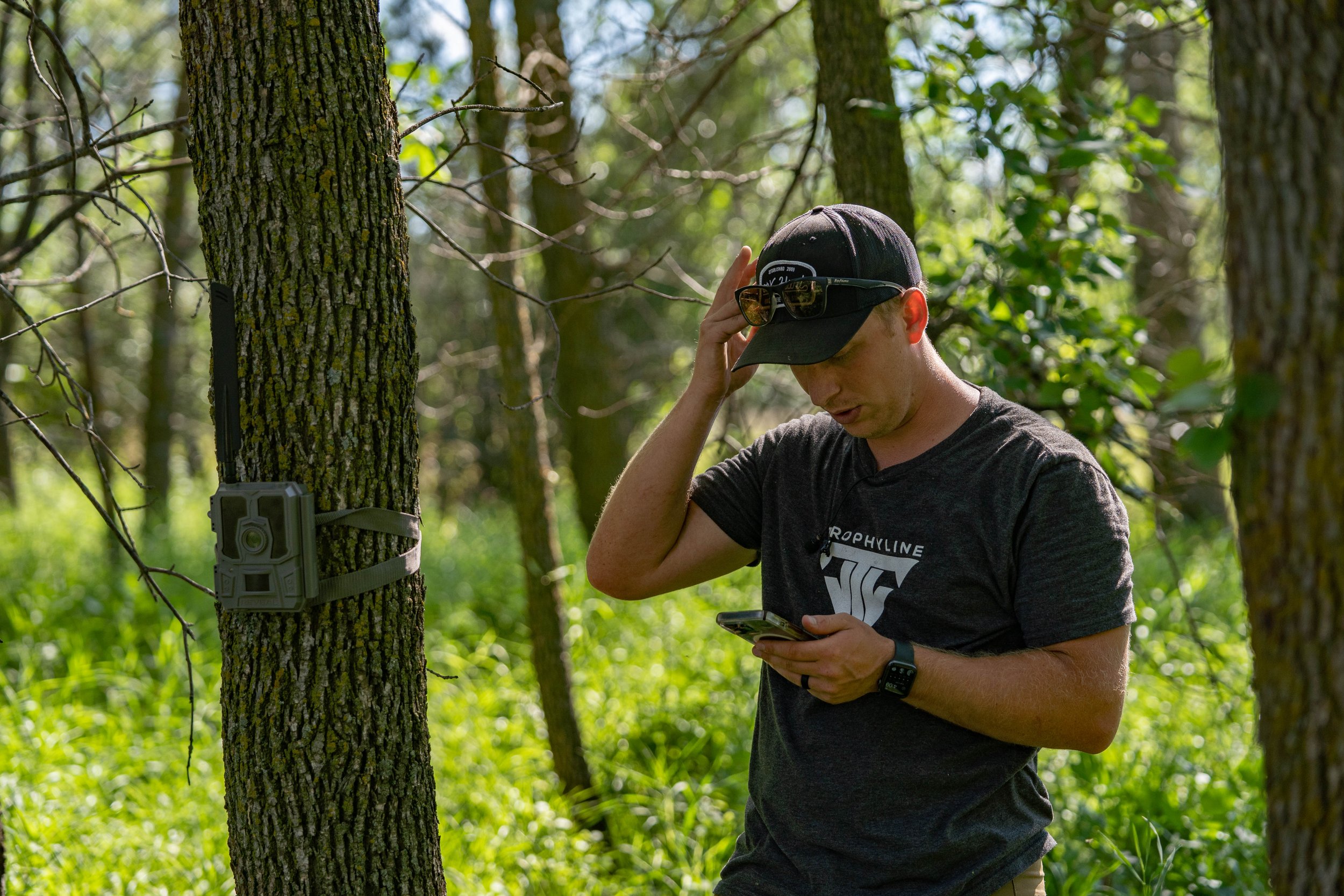By Alex Comstock
This year up to this point, shed hunting here in northern Minnesota has been pretty much stagnant as we still have a ton of snow outside. Just recently though, as of last week, the temperatures have started to rise and the snow levels are starting to drop. I’m hoping that by the end of this week, it will get to the point where I will start having better chances of actually finding antlers when I’m out looking. Speaking of finding antlers, today I wanted to go over three simple tips I have for you that can help you find more shed antlers.
1. Bring a Practice Antler
This is something I like to do, especially early in shed season before I’ve found many sheds. It seems to help me adjust my eyes so I’m use to picking up what an antler will look like on the ground. I usually bring a practice antler with me and then I’ll throw it over my shoulder behind me, turn around and see how fast I can find it. Do this a few times, and you should hopefully be able to find it quicker and quicker every time you do this. Be careful though not to throw it too far, as I know a few different people who were putting this tactic to use and actually lost their antler or it took them an hour or more to find it. It just goes to show how tricky it really can be finding a shed in the field sometimes.
2. Binoculars Are Your Friend
As I mentioned in the video above, binoculars can save you a lot of steps. It’s not that I’m necessarily always scanning and looking for antlers with my binoculars, rather than when I think I see something off in the distance in a direction that I’m not already walking, opposed to having to walk over to it to see if it’s indeed a shed or not, I can simply throw up my binoculars and either confirm or deny what I thought I saw. They’ll save you steps and increase your efficiency shed hunting.
3. You Have To Be Looking in The Right Spot
It goes without saying, but in order to be finding sheds, you need to be looking where bucks have actually spent their time in the winter/early spring. Too often, people like to look in areas they hunt in the fall, but a lot of times, deer might be wintering in completely different areas than where you hunt them. If you don’t already know where deer are spending their time in the winter, then winter scouting becomes even more important. A great time to do this is right after the season concludes and you can get out there and find out where deer are wintering.
As an example, in the video above, I talked about how I’m after a certain buck’s sheds right now. Though I’m fairly close to where I know he lives in the fall, I’m not on the same property looking for his sheds as I where I hunt him, but that’s because I spent time figuring out where deer are wintering, and once I located that area, I knew that’s where I needed to be looking for his sheds.
Conclusion
By doing this three things, it’s not like you’re going to automatically become a shed finding machine. But, these three tips really should help you. I use them all of the time, and I feel as though by implementing them, I have become a better shed hunter over the years. So with that said, put them to use, and good luck shed hunting the rest of the spring!

• 100% combed and ring-spun cotton (Heather colors contain polyester)
• Fabric weight: 4.2 oz/yd² (142 g/m²)
• Pre-shrunk fabric
• Side-seamed construction
• Shoulder-to-shoulder taping
• Blank product sourced from Guatemala, Nicaragua, Mexico, Honduras, or the US
• 60% cotton, 40% polyester
• 100% polyester mesh back
• Structured, 6-panel, mid-profile cap
• Pre-curved contrast stitched visor
• Underbill matches visor color
• Adjustable plastic snapback
• Blank product sourced from China
• 100% cotton face
• 65% ring-spun cotton, 35% polyester
• Front pouch pocket
• Self-fabric patch on the back
• Matching flat drawstrings
• 3-panel hood
• Blank product sourced from Pakistan
• 100% combed and ring-spun cotton (Heather colors contain polyester)
• Fabric weight: 4.2 oz/yd² (142 g/m²)
• Pre-shrunk fabric
• Side-seamed construction
• Shoulder-to-shoulder taping
• 100% combed and ring-spun cotton (Heather colors contain polyester)
• Fabric weight: 4.2 oz/yd² (142 g/m²)
• Pre-shrunk fabric
• Side-seamed construction
• Shoulder-to-shoulder taping
• 100% cotton
• Sport Grey 90% cotton, 10% polyester
• Fabric weight: 5.0–5.3 oz/yd² (170-180 g/m²)
• Open-end yarn
• Tubular fabric
• Taped neck and shoulders
• Double seam at sleeves and bottom hem
• 50% pre-shrunk cotton, 50% polyester
• Fabric weight: 8.0 oz/yd² (271.25 g/m²)
• Air-jet spun yarn with a soft feel and reduced pilling
• Double-lined hood with matching drawcord
• Quarter-turned body to avoid crease down the middle
• 1 × 1 athletic rib-knit cuffs and waistband with spandex
• Front pouch pocket
• Double-needle stitched collar, shoulders, armholes, cuffs, and hem





































